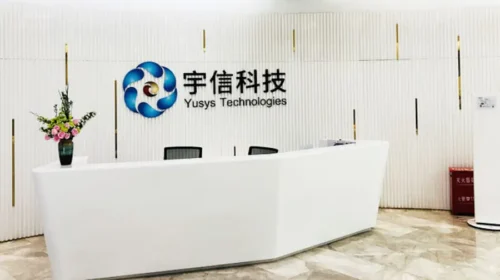Investors unimpressed by massive dividend from shrinking Lufax

The online lender’s American depositary shares rose by just $1.11 in the two days after it announced a special dividend of $2.42 per ADS
Key Takeaways:
- Lufax announced a massive special dividend of $2.42 per ADS, equal to about half of its Friday closing price of $4.48
- The company slashed the size of its loan portfolio by 45% last year, and expects to reduce it by another 32% this year as it focuses on higher quality borrowers
By Doug Young
Online lender Lufax Holding Ltd. (LU.US; 6623.HK) just keeps getting smaller. First, the company underwent a radical transformation that saw its lending portfolio shrink by about nearly half in 2023, as it focused on higher-quality borrowers in a broader “de-risking” process. Now, Lufax’s cash pile is about to undergo a similar downsizing with its announcement of a massive special dividend that will cost it around 10 billion yuan ($1.38 billion) – equal to about a quarter of its total cash at the end of last year.
That massive dividend will see shareholders of record on April 9 receive a dividend of $2.42 per American depositary share (ADS), the company announced in its latest quarterly results released last Thursday.
Put differently, the dividend amount was equal to 72% of the U.S.-listed stock’s last close before the announcement. And even after a 33% jump in the stock in the two trading days since the announcement, the dividend still represents about 54% of the ADS price at its Friday close of $4.48.
Looking at this in yet another way, the ADS has risen $1.11 since the announcement, or less than half the size of the dividend. So even if the price falls back to pre-announcement levels after the dividend is paid, anyone who buys the ADS now would still pocket a very nice profit. That raises the question of why investors weren’t more excited about this unusual mega-dividend.
In fact, the lack of enthusiasm maintains the high degree of skepticism towards private Chinese online lenders in general. That doubt has dogged the group for about the last five or six years, following a regulatory crackdown over government concerns that they were too inexperienced at risk control.
Those concerns linger, as the unpredictability of regulators is always one of the biggest risks of doing business in China. More recently, there’s been the added concerns over China’s slowing economy, which directly affects online lenders like Lufax in the form of higher loan default risks.
The company spent much of last year tackling that risk, and in its latest report referred to 2023 as a year of “de-risking.” At the highest level, that de-risking has seen the company sharply reduce its lending to focus on the highest quality borrowers. Its outstanding loan balance stood at 315 billion yuan at the end of 2023, down 45% from 576 billion yuan a year earlier.
The company expects the loan balance to continue shrinking this year, saying it anticipates ending the year with a balance of 200 billion yuan to 230 billion yuan. That would be down by 32% at the midpoint, and would represent a shrinkage of nearly two-thirds from better times two years ago when the company was lending more freely.
“To sum up, during the fourth quarter, with the completion of (our) de-risking initiative, the downsizing of our business is under control and we have strong visibility of our businesses,” said Chairman and CEO YongSuk Cho on the company’s earnings call. “However … we still need more time due to our prudent strategy and transformation of our business model.”
Consumer lending shift
Lufax’s shift has several key elements, all aimed at improving the quality of its loans and its profitability. The company is controlled by financial services giant Ping An and was once a leader among a group of private fintech lenders to emerge in the mid-2010s by targeting small businesses and consumers – borrowers often overlooked by traditional state-run banks.
Nearly all those lenders later either closed or morphed into middleman loan facilitators in response to the crackdown, though Lufax remains one of the few that continues to do its own direct lending. Under a key element of its latest business transformation, the company is moving to a model where it guarantees all of its loans, rather than relying on third-party insurance companies for such guarantees. That will save it lots of money in insurance fees, though is also driving it to become more selective to lower its default risks.
Another major change is seeing Lufax focus more heavily on consumer lending, lowering its previous preference for small business loans as many such businesses struggling in the current economic slowdown. The company said about 40% of its new loans in the fourth quarter were to consumers, raising consumer loans to 12% of its portfolio at the end of last year – up from just 5% at the end of 2022.
The company is also rapidly shrinking its geographical reach to focus on the most profitable markets. As a result, its footprint shrank to 146 cities by the end of last year from more than 300 a year earlier, and it slashed its direct sales team to about 21,000 from 47,000 over the same period.
On the top line, the company’s growing conservatism resulted in a 44% drop in its fourth-quarter revenue to 6.86 billion yuan from 12.3 billion yuan a year earlier. The company reduced its expenses by nearly 40% year-on-year for the quarter, but a large credit impairment loss pushed it into the red with a 832 million yuan net loss for the quarter.
The big jump in its share price after announcing the dividend finally gave Lufax a respectable trailing price-to-earnings (P/E) ratio of 20. That’s well ahead of the 5.6 for rivals Qifu (QFIN.US), 4.2 for FinVolution (FINV.US) and just 1.8 for LexinFintech (LX.US). But Lufax’s ratio falls back to just 5.7 on a forward basis, based on expectation for big profit growth this year, showing investors still aren’t particularly excited about the company.
Dividends are a growing theme among China’s fintech lenders, and Lufax is actually one of the last to offer such payouts. Qifu, FinVolution and LexinFintech all already offer regular dividends, with annual amounts equal to about 5% of the current share prices for Qifu and FinVolution, and an even higher 10% for LexinFintech.
Such returns of cash to shareholders look relatively attractive, and Lufax’s upcoming massive dividend looks like an especially good deal for investors. That could help attract investors back to the stocks over the short term, though the companies will need to show they can control the bigger risks that come with an economic downturn to lure investors to their stocks over the longer term.
The Bamboo Works offers a wide-ranging mix of coverage on U.S.- and Hong Kong-listed Chinese companies, including some sponsored content. For additional queries, including questions on individual articles, please contact us by clicking here.
To subscribe to Bamboo Works free weekly newsletter, click here






